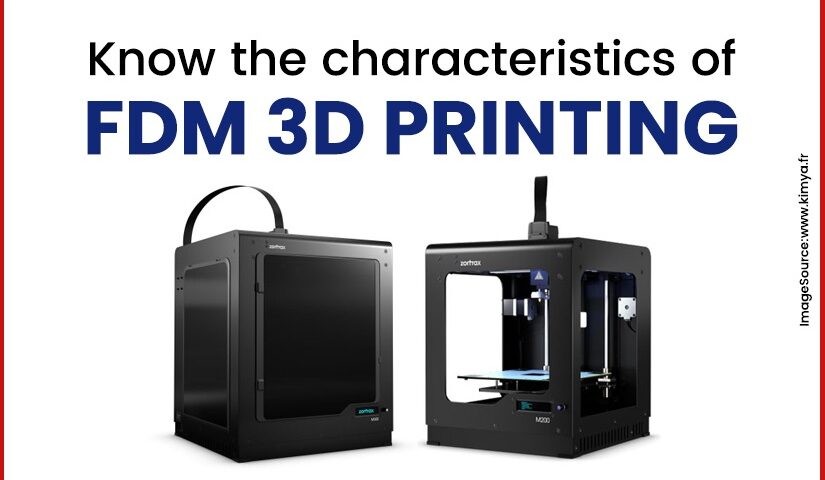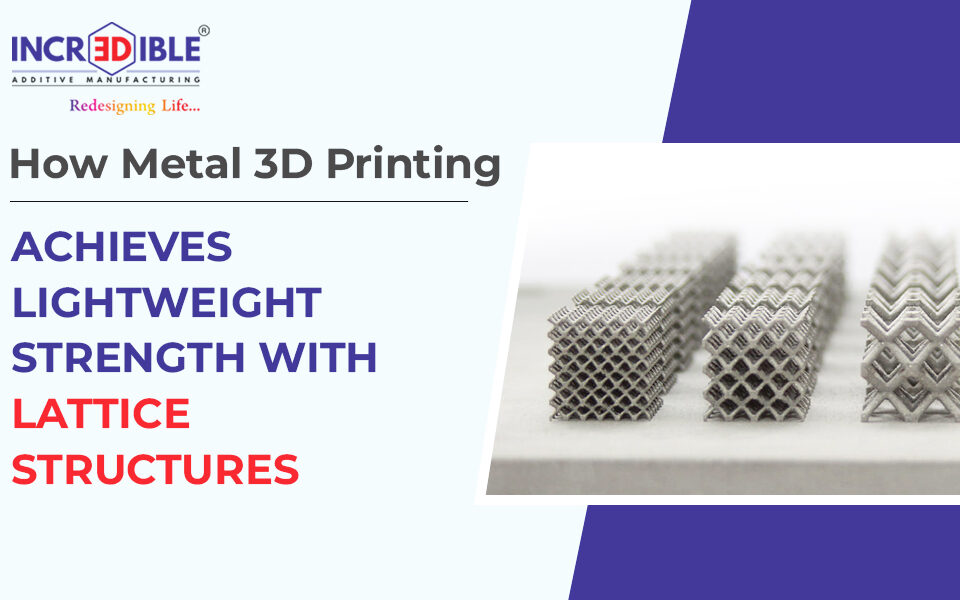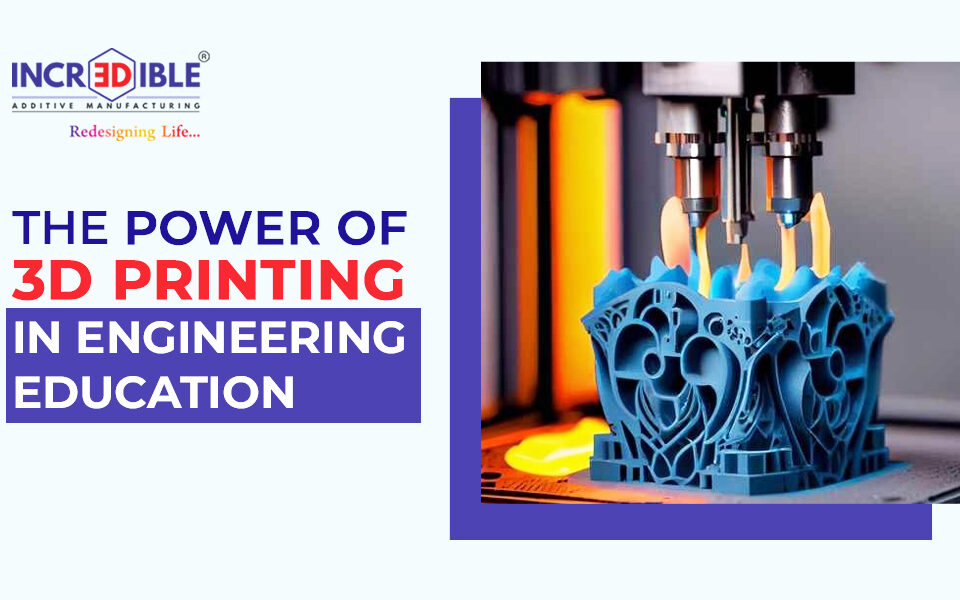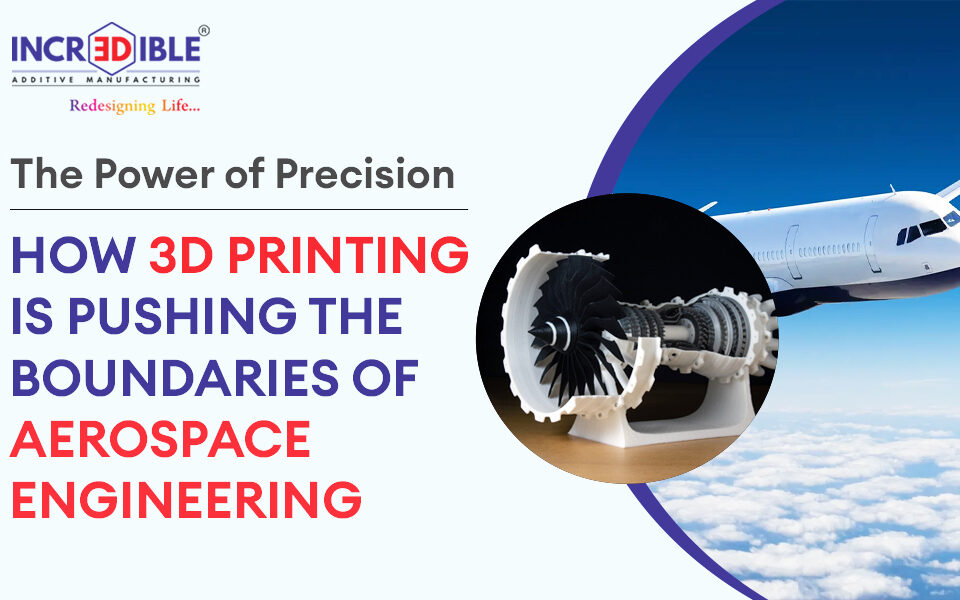Fused Deposition Modelling (FDM) is an additive manufacturing process making use of a continuous thermoplastic or composite material thread in the form of filament to produce 3D components. The plastic filament is fed through an extruding nozzle by an extruder, where it is melted and is then automatically deposited layer by layer, onto the build platform.
FDM or Fused Filament Fabrication (FFF) incorporates material extrusion technology, one of the seven primary types of additive manufacturing technologies. The most popular 3D printing method, FDM, has the greatest number of users worldwide and is frequently the first 3D printing technology that consumers encounter.
Incredible AM Pvt. Ltd based in Pune and a forerunner in 3d printing technology in India caters to fulfil the demands for 3d printed products and services to various industries. Our state-of-the-art technology employs all the major 3d printing technologies including FDM. In this blog, let us learn about the characteristics of FDM 3d printing.
Working on FDM 3D printing
Layer by layer, melted filament material is deposited onto a build platform by an FDM 3D printer until you have a finished part. FDM converts digital design files into physical dimensions by uploading them to the machine itself. Polymers including ABS, PLA, PETG, and PEI are among the materials used in FDM. The machine feeds these materials as threads through a heated nozzle.
You must first insert a spool of this thermoplastic filament into the printer in order to use an FDM machine. The filament is fed through an extrusion head and nozzle by the printer once the nozzle reaches the proper temperature.
The three-axis system that this extrusion head is connected to enables it to move along the X, Y, and Z axes. The printer deposits melted material layer by layer along a path specified by the design by extruding it into thin strands. The substance solidifies and cools after being deposited. In some situations, you can attach fans to the extrusion head to speed up cooling.
Similar to filling in a shape with a marker, filling an area requires several passes. The build platform falls after the printer completes a layer, and the machine starts working on the following layer. The extrusion head may rise in some machine configurations. Until the portion is finished, this process is repeated.
The parameters for FDM 3d printing
Most FDM systems enable you to change a number of process parameters. These include the temperature of the build platform and nozzle, the build speed, the layer height, and the speed of the cooling fan.
Build size and layer height are other crucial considerations. A desktop 3D printer typically has a build area of 200 x 200 x 200 mm. You can divide a large model into smaller pieces and then reassemble it if you’d rather print your part on a desktop printer.
The normal layer height for FDM is in the region of 50 to 400 microns. Although printing taller layers allows you to make parts more rapidly and at a lesser cost, printing shorter layers provide smoother parts and better captures curved geometries.
Characteristics of FDM 3D printing
1.Warping
Warping constitutes one of the most common FDM problems. The extruded substance contracts in size as it cools and solidifies. Because different sections of the print cool at varied rates, their dimensions also change similarly. Internal stresses are increased by differential cooling, which pulls the bottom layer upward and results in distortion.
By carefully monitoring and managing the temperature of the chamber and the build platform, warping can be prevented. Warping could be decreased by having a component and building platforms that adhere well to one another.
2.Adjustable parameters
In most FDM systems, you may change the temperature of the build platform and the nozzle. The build speed, the layer height, and the cooling fan speed can also be adjusted. However, these vary depending on the material and are often established by the printing service provider.
3.Build volume
The largest component that a machine can create is the build volume. The build volume of a DIY 3D printer is typically 200 x 200 x 200 mm. While designing, consider the build volume of the printer you will use. You can create larger models with an FDM printer by producing and reassembling smaller pieces. It is also a preferred method for better cooling.
4.Layer height
FDM uses layers with a height varying from 0.02 mm to 0.4 mm. A higher layer height produces parts that print more quickly and more cheaply, whereas a lower layer height produces components that are smoother and better represent curved geometries.
Typically, a layer height of 0.2 mm represents a fair balance between price, turnaround time, and quality. The higher layer height speeds up the process of creating low-fidelity quick prototypes.
5.Layer adhesion
Good adhesion between the deposited layers is essential for an FDM component. As the nozzle extrudes the current, the molten thermoplastic is pressed up against the layer before it. The previous layer’s surface re-melts due to high temperature and pressure, enabling the new layer to adhere to the previously printed area. The bonding strength between the several layers is always less than the base strength of the material.
FDM components are anisotropic. As a result, it is crucial to consider part orientation when designing components for FDM, especially when developing functional parts.
The molten material deforms into an oval shape as a result of being pressed up against the layer before it. Therefore, even at low layer heights, FDM components will always have a wavy surface, and details like tiny holes or threads may need to be processed after printing.
6.Support structure
In FDM printing, geometries to be created with overhangs call for a support structure. The surfaces printed on supports will have reduced surface quality than the rest of the item. As a result, it is suggested that to design such parts, the need for support structures should be minimized.
Generally, the same material is used to print the object as well as the support. Other support materials that may dissolve in liquid are available for industrial printers, however, they are mostly used in an expensive desktop or industrial FDM 3D printers. The surface quality of an object is greatly enhanced by printing on dissolvable supports, but the overall cost of a print goes up.
7.Infill and shell thickness
To shorten the print time and save materials, FDM printers do not create solid components. Instead, the machine makes several rounds to print the shell or exterior perimeter and then fills the interior, or infill, with an internal, low-density structure.
The strength of FDM-printed items is substantially influenced by infill and shell thickness. The default settings on most of desktop FDM printers are 20% infill density and 1 mm shell thickness, which offers a good balance between strength and speed for short prints.
Conclusion
FDM is the easiest 3d printing method. Besides, the printer is smaller, the process is safer, and uses cheaper materials. Therefore it has an edge over other 3d printing methods and will continue to develop in the future at a great pace.
Incredible AM Pvt. Ltd manufactures products using FDM printers accurately and precisely. Here, experienced engineers develop products from scraps using the state-of-the-art facility. We are trusted partners capable of delivering quality products in the shortest interval. It is a one-stop solution for all 3d printing services and products. If you are in need of any 3d printing service or product, connect with us.




